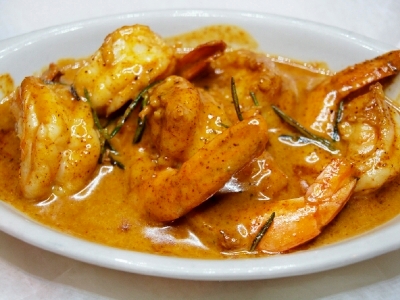 Thursday, March 8, 2018: Grandly Opening Vyoon. It's opening night for Vyoon's Grand Opening. The party is on the second floor, a handsome space lined by old bricks (the CBD and Warehouse District full of them) that looks down on the Tchoupitoulas Street sidewalks, well occupied by traffic that fills the neighborhood and cafes in the vicinity. There is wine, cheese, cocktails, and a little bit of food, filling the mouths of the guests. a harpist plays all night, even though she has a tough time being heard above the conversations of the fifty or so people in the room. I talk with both of owner Zohreh Khaleghi sons, both of whom have a strong interest in the movie business.
The party goes on for a bit over an hour, but which time it seems that ther kitchen and wait staff needs to turn its attention to the nearly-full dining room on the first floor. I walk out onto the Tchoup sidewalk and proceed a half-block to the radio station parking garage, from which I head home.
It occurs that other than the nibbles I had at the Vyoon's party and the apple-cinnamon pastries Mike Weldon picks up for delivery to the radio station, I have had nothing to eat all day. This is one of the ways I've had for losing seventy pounds in the past three years.
[caption id="attachment_55571" align="alignleft" width="300"]
Thursday, March 8, 2018: Grandly Opening Vyoon. It's opening night for Vyoon's Grand Opening. The party is on the second floor, a handsome space lined by old bricks (the CBD and Warehouse District full of them) that looks down on the Tchoupitoulas Street sidewalks, well occupied by traffic that fills the neighborhood and cafes in the vicinity. There is wine, cheese, cocktails, and a little bit of food, filling the mouths of the guests. a harpist plays all night, even though she has a tough time being heard above the conversations of the fifty or so people in the room. I talk with both of owner Zohreh Khaleghi sons, both of whom have a strong interest in the movie business.
The party goes on for a bit over an hour, but which time it seems that ther kitchen and wait staff needs to turn its attention to the nearly-full dining room on the first floor. I walk out onto the Tchoup sidewalk and proceed a half-block to the radio station parking garage, from which I head home.
It occurs that other than the nibbles I had at the Vyoon's party and the apple-cinnamon pastries Mike Weldon picks up for delivery to the radio station, I have had nothing to eat all day. This is one of the ways I've had for losing seventy pounds in the past three years.
[caption id="attachment_55571" align="alignleft" width="300"] Mole sauce over enchiladas with cheese and chicken.[/caption]
Friday, March 9, 2018. Casa Borrega, Where They Make Great Molé Poblano.
My daughter Mary Leigh and the company she works for are working on a big project in central Mississippi. It's just far enough away from home to make a daily commute out of the question. The crew goes there on Mondays and returns home on Fridays, stays in private hotel rooms during the week, and looks around for places for dinner on their per-diems. ML has a great time with this, as much for the artistic, architectural parts of her job as for the carpentry. Which is certainly far beyond where I was at her age. Both our kids have a great work ethic, and it makes my heart throb with pride.
ML came home for the weekend today, mainly so Mary Ann can use ML's car. MA had a minor sprain and has trouble shifting gears in her own car. Most everything on ML's cars operates with pushbuttons, which makes it easier.
The Marys and I went to dinner after my radio show ended. For some reason, ML always dines in the Mexican restaurants when she first arrives in the next town on her way. MA suggests that we partake of this habit at Cassa Borrega, the excellent cantina on Oretha Castle Haley Boulevard, a couple of blocks from the Southern Food and Beverage Museum. I reviewed Borregas's owners about a year ago, too. Here is the kind of Mexican eatery I love, with a fascinating array of salsas. The ones you eat with tortilla chips are impressive, including a red one, a dark red one, a green one, and my favorite of them all: Molé Poblano, the famous sauce from Central Mexica that's made with peppers, sesame, and bitter chocolate. Although I've found about a half-dozen restaurants around town with molé on the menu, the sauce is still hard to find prepared with excellence. This one is. Also impressive are the chicken tortillas that go with the molé, and an extraordinarily delectable chorizo con queso. That may also have topped the molé on this trip.
The restaurant is in a well-built, weathy-looking residence in the middle of what was once a beautiful neighborhood. It emanates the feeling that it will someday become magnificent again. While we're waiting, we can take in the current Mexican decor, which is hard to explain describe without making it sound like a cartoon.
I welcome the advent this weekend of Daylight Saving Time, which will make this restaurant and many others more agreeable. The neighborhood which is constantly improving thanks to SOFAB, Café Reconcile and the like. I'd live there myself if I could.
Casa Borrega. Center City: 1719 Oretha Castle Haley Blvd. 504-427-0654.
[divider type=""]
Mole sauce over enchiladas with cheese and chicken.[/caption]
Friday, March 9, 2018. Casa Borrega, Where They Make Great Molé Poblano.
My daughter Mary Leigh and the company she works for are working on a big project in central Mississippi. It's just far enough away from home to make a daily commute out of the question. The crew goes there on Mondays and returns home on Fridays, stays in private hotel rooms during the week, and looks around for places for dinner on their per-diems. ML has a great time with this, as much for the artistic, architectural parts of her job as for the carpentry. Which is certainly far beyond where I was at her age. Both our kids have a great work ethic, and it makes my heart throb with pride.
ML came home for the weekend today, mainly so Mary Ann can use ML's car. MA had a minor sprain and has trouble shifting gears in her own car. Most everything on ML's cars operates with pushbuttons, which makes it easier.
The Marys and I went to dinner after my radio show ended. For some reason, ML always dines in the Mexican restaurants when she first arrives in the next town on her way. MA suggests that we partake of this habit at Cassa Borrega, the excellent cantina on Oretha Castle Haley Boulevard, a couple of blocks from the Southern Food and Beverage Museum. I reviewed Borregas's owners about a year ago, too. Here is the kind of Mexican eatery I love, with a fascinating array of salsas. The ones you eat with tortilla chips are impressive, including a red one, a dark red one, a green one, and my favorite of them all: Molé Poblano, the famous sauce from Central Mexica that's made with peppers, sesame, and bitter chocolate. Although I've found about a half-dozen restaurants around town with molé on the menu, the sauce is still hard to find prepared with excellence. This one is. Also impressive are the chicken tortillas that go with the molé, and an extraordinarily delectable chorizo con queso. That may also have topped the molé on this trip.
The restaurant is in a well-built, weathy-looking residence in the middle of what was once a beautiful neighborhood. It emanates the feeling that it will someday become magnificent again. While we're waiting, we can take in the current Mexican decor, which is hard to explain describe without making it sound like a cartoon.
I welcome the advent this weekend of Daylight Saving Time, which will make this restaurant and many others more agreeable. The neighborhood which is constantly improving thanks to SOFAB, Café Reconcile and the like. I'd live there myself if I could.
Casa Borrega. Center City: 1719 Oretha Castle Haley Blvd. 504-427-0654.
[divider type=""]
 Barbecue Shrimp
Barbecue Shrimp
Barbecue shrimp, one of the four or five best dishes in all of New Orleans cooking, is completely misnamed. They're neither grilled nor smoked, and there's no barbecue sauce. It was created in the mid-1950s at Pascal's Manale Restaurant. A regular customer came in and reported that he'd enjoyed a dish in a Chicago restaurant that he though was made with shrimp, butter, and pepper. He asked Pascal Radosta to make it. Radosta took a flyer at it. The customer said that the taste was not the same, but he liked the new dish even better. So was born the signature dish at Manale's.
 The dish is simple: huge whole shrimp in a tremendous amount of butter and black pepper. The essential ingredient is large, heads-on shrimp, since the fat in the shrimp heads makes most of the flavor. Resist the urge to add lots of herbs or garlic. This recipe is largely based on the new recipe created by Chef Gerard Maras in the early 1980s at Mr. B's. The butter emulsifies into the other liquids, and gives not only a bigger flavor but a nicer-looking dish.
The amount of butter and pepper in my recipe seem fantastic. Be bold. This is not a dish you will eat often--although you will want to.
The dish is simple: huge whole shrimp in a tremendous amount of butter and black pepper. The essential ingredient is large, heads-on shrimp, since the fat in the shrimp heads makes most of the flavor. Resist the urge to add lots of herbs or garlic. This recipe is largely based on the new recipe created by Chef Gerard Maras in the early 1980s at Mr. B's. The butter emulsifies into the other liquids, and gives not only a bigger flavor but a nicer-looking dish.
The amount of butter and pepper in my recipe seem fantastic. Be bold. This is not a dish you will eat often--although you will want to.
- 3 lbs. fresh Gulf shrimp with heads on, 16-20 count to the pound
- 1 Tbs. lemon juice
- 2 tsp. Worcestershire sauce
- 1/4 cup dry white wine
- 2 cloves garlic, chopped
- 4 Tbs. black pepper (or more!)
- 1/4 tsp. salt
- 3 sticks butter, softened
- 2 tsp. paprika
- 1 loaf French bread
 March 12, 2017
March 12, 2017
Days Until. . .
St. Patrick's Day--March 17
St. Joseph's Day--19
Easter--April 1
Food Calendar
Easter--April 1
Food Calendar
Today is National Muffuletta Day. The muffuletta has an obvious Italian ancestry, but it was created in New Orleans, from which it has spread to some other parts of the country in recent years. A well-made muffuletta is one of the world's best sandwiches, and a perfect lunch for a meeting that needs its brains cleared. (As long as everybody is eating it, anyway.) Although it's obviously Italian, you won't find muffulettas in Italy. The word is a rarely-used Sicilian dialect word for a big, round, thick loaf bread. That's what a New Orleans Italian (there is dispute over who he was) used to make a new kind of panino in the early 1900s. The unique touch wasn't the bread but the dressing: a chunky salad of olives, peppers, garlic, and various marinated vegetables. Also in there are ham, Genoa salami, mozzarella Swiss cheese (at least), plus mortadella and provolone (perhaps). A muffuletta is essentially an antipasto sandwich. It's a fascinating battle between elements with powerful flavors (salami, garlic, olives) and those with mellow, moderating flavors (cheese, olive oil, and crusty bread). The ham centers everything else. It's a flavor like nothing else in the sandwich world. Two controversies attend the muffuletta. The first is who invented it. We know that it came out of first-generation New Orleans Italian grocery stores in the French Quarter. The Central Grocery voices the loudest claim to have created the sandwich, but there are too many other stories out there to take that as gospel. The other issue is whether it should be served hot, as it commonly is these days. It did not start that way, and the old muffuletta mills never have heated their sandwiches. I think that heating a muffuletta upsets the balance of flavors, makes the meats greasy and the cheeses slimy, and ruins the olive salad. But most shops now heat muffs automatically. This is a move away from the sandwich's origins, and it must be stopped.
The Old Kitchen Sage Sez:
It's bad luck to split a muffuletta more than four ways. Worse luck will come from eating a whole one all by yourself.
Deft Dining Rule #272:
Cheese tastes best at room temperature. Chilling cheese hides its flavors and aromas. Melting cheese takes away its integrity.
Service Hall Of Fame
Gilbert LeFleur (his name tag said "Louis") had two long stints as a waiter at Galatoire's. In between, he was a waiter and then the maitre d' at LeRuth's. When that legendary restaurant closed in the 1990s, he returned to Galatoire's. He was one of three cousins from the Cajun country who worked in that classic dining room. He was on the floor right until the day before he died of a sudden heart attack on this date in 2006. Gilbert was one of my regular waiters at Gal's, as well as a good friend, always smiling and telling jokes.
Annals Of Popular Drinks
Today in 1894, in Vicksburg, Mississippi, Coca-Cola was sold in bottles for the first time. Until then, it was strictly a fountain drink. Bottling caused the product to take off, and it gave birth to an entirely new industry. Coke became so big that on this same date, in 1987, it became a component of the Dow Jones Industrial Average. And if that isn't enough coincidences for you, this is the day, in 1929, when Asa Candler died. He bought the formula for Coca-Cola from its inventor and began marketing it.
Edible Dictionary
spiedini, [speh-DEE-nee], Italian, n. pl.--"Italian shish kebabs" tells ninety percent of the story. But spiedini has enough distinction to deserve its own definition. For starters, spiedini are almost always made entirely of meat--no vegetables. The meats tend to be rather good; even ground meats are considered raffish in spiedini. (Although sausage is welcomed.) Most spiedini use more than one variety of meat on the skewer. Here in New Orleans, a variation has emerged in which the meats are stuffed with a concoction of bread crumbs, prosciutto, garlic, parmesan cheese, and olive oil. If anything, those are even better than all-meat versions. The word is rarely spelled correctly on menus.
Gourmet Gazetteer
Chips Creek, California is way up in the High Sierra, some 114 miles north of Sacramento. The creek runs from the north into the Feather River, whose valley affords one of the easier crossings of the formidable mountains. It's wild country. The nearest restaurants of note are in Quincy, thirty miles of winding mountain two-lane blacktop east of Chips Creek. The one that appeals most to us is the Morning Thunder Cafe.
Music To Stroll Around The French Quarter By
Arranger, composer, and conductor Paul Weston was born today in 1912. He had a long career during and after the Big Band era. In the 1950s he composed a marvelous pop-jazz-symphonic work called Crescent City Suite. Listening to it gives one a feeling for what New Orleans was like in those days. Weston wasn't from here, but he liked our city. His wife was Jo Stafford, a strong choice as the finest female voice rendering the American standard songbook.
Food Through History
Today in 1930, Mohandas Gandhi began a two-hundred-mile walk with many of his followers to the seashore, where salt naturally forms by seawater evaporation. However, the British colonial law said that all salt must be bought from British producers. Picking up natural salt was illegal. Gandhi challenged this stupidity, picked up the salt, and was immediately arrested, as he knew he would be.
Eating Around The World
Today is the National Day for Mauritius, a small island in the Indian Ocean. It celebrates its independence from England in 1968. Mauritius, one of the most prosperous of African nations, was the home of the dodo bird, which was quickly killed to extinction after the Portuguese arrived in the 1500s. Imagine: a pigeon the size of a turkey! I wonder what that tasted like. A New Orleans chef is from Mauritius: Dominique Macquet, who has been moving around a lot in recent years. He is now in the kitchen of Saveur, a new restaurant in the former Baie Rouge on Magazine Street.of Dominique's on Magazine.
Food Namesakes
Leonard Chess, founder of the record company that bore his name, was born today in 1917. We wonder if he liked his namesake pie (like a pecan pie without the pecans). . . Pro baseballer Darryl Strawberry came into the world today in 1962. . . Today in 1986, Susan Butcher won the Iditarod dog-sled race, 1158 miles, in Alaska. . . William Thomas Jr., who played Buckwheat in the Our Gang films, was born today in 1931.
Words To Eat By
"A Frenchman in the train had given him a great sandwich that so stank of garlic that he had been inclined to throw it at the fellow's head."--Ford Madox Ford, English writer of the late 1800s and early 1900s, who clearly had experience with a muffuletta.
Words To Drink By
"One of the disadvantages of wine is that it makes a man mistake words for thoughts."--Samuel Johnson.